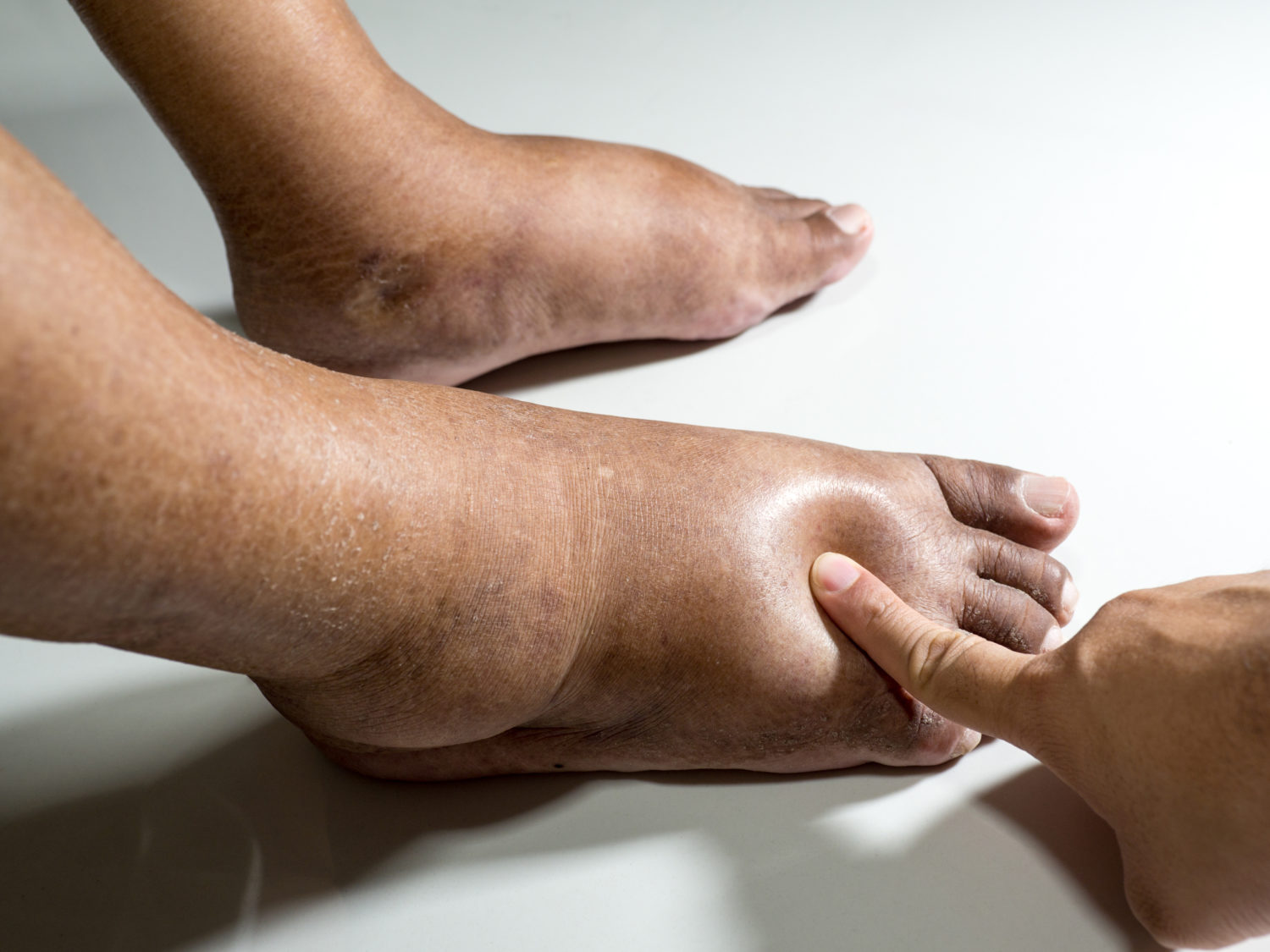Patients with diabetes are especially at risk of experiencing foot problems. This is due to the fact that the disease affects both the sense of feeling in the foot as well as blood circulation to the foot.
“People with diabetes can develop many different foot problems. Even ordinary problems can get worse and lead to serious complications,” cautions the American Diabetes Association.
Since diabetic foot can lead to severe health problems and even result in death, it is important for diabetic patients to be well-informed on the risks their condition poses to their feet, what warning signs to look out for, when to ask for help, and what treatment is available.
What Does Diabetic Foot Pain Feel Like?
A number of conditions are related to diabetic foot, each of which has varying symptoms. If you have diabetes, keep on the lookout for any of the following.
Diabetic Arthropathy
Also known as Diabetic Arthritis, this degenerative condition affects joints within the feet, causing them to break down due to nerve damage.
Symptoms of diabetic arthropathy include:
- Pain or soreness in the joints.
- Swelling and possible redness of the foot.
- Noticeable changes in the foot’s appearance.
- Warmness to the touch.
Peripheral Neuropathy
At the start, loss of feeling due to peripheral neuropathy can be subtle. This is dangerous because damage can occur without the patient noticing. For example, a patient may not notice he has stepped on a sharp object or has developed a blister until it has become infected and needs immediate medical attention.
Symptoms of peripheral neuropathy include:
- Tingling, burning, or pins and needles sensation.
- Hypersensitivity to the touch.
- Numbness, including lack of sensitivity to temperature or pain.
- Changes in the physical appearance of the feet, such as the shape of the toes.
- Cramping and sometimes sharp pains.
Vascular Complications
Diabetic patients often experience the hardening of their arteries which leads to poor circulation, especially in the feet. This compromises the body’s regenerative abilities, making it hard to heal injury or infection.
Symptoms of vascular complications include:
- Persistently cold feet.
- Pain in the calves when walking.
- Numbness of the feet.
- Discoloration of the feet.
- Varicose veins.
Calluses, Ulcers, & Skin Changes
Due to loss of feeling and circulation in the foot as well as resulting deformities to the shape of the foot and toes, diabetic patients are at special risk of forming calluses. This is because the foot can begin to rub differently inside of shoes than before. Calluses, in turn, can deteriorate into ulcers.
Ulcers and other foot wounds may heal slowly and even lead to infection. Some patients do not notice that they have developed a callus or ulcer until it has become infected. In serious cases, an infection can even lead to losing a limb through amputation.
When to Visit the Podiatrist
Depending on the type and severity of your diabetes, you likely take preventative measures every day to stay healthy. By means of a regimented diet along with regular doses of insulin and/or other medications, most diabetic patients take measures to carefully control and monitor their blood sugar levels throughout the day.
Still, another important factor of regular diabetic care is caring for the feet.
For anyone suffering from diabetes, periodic trips to the podiatrist are necessary. To properly manage diabetes and maintain optimum health, patient cooperation is key.
Beyond routine trips to the podiatrist, be sure to quickly contact your podiatrist or visit the podiatric clinic if you have any of the symptoms listed above or notice any changes or abnormalities in the condition of your feet, such as growing callouses, infected toenails, or wounds. For such conditions, medical attention is essential to prevent infection.
How to Treat Diabetic Foot
A number of preventative measures can be taken to help protect your feet and your overall health as a diabetic patient.
Taking these simple steps can save your feet and even your life:
- Keep your feet clean. Daily clean your feet and use a pumice stone to knock down calluses. Be careful not to use too hot of water, or you may burn your feet without realizing it. Do not try to cut calluses on your own. Rather, seek professional help.
- Exercise regularly. A daily dose of moderate exercise can boost circulation, stabilize body weight, and help keep up your overall health. Stay off your feet if you have any open sores.
- Avoid smoking. Smoking accelerates the hardening of arteries and puts diabetics at greater risk of serious circulatory problems.
- Wear diabetic shoes. Therapeutic shoes are specially designed to relieve pressure and avoid rubbing and injury.
- Maintain a diabetic-approved diet. Controlling your blood sugar levels, cholesterol, and blood pressure are keys to all of our health, but especially for diabetic patients.
- Take proper medication. Keeping up with medications prescribed by your physician is key to managing diabetes.
- Regularly visit the podiatrist. Your foot and ankle doctor will help you strategize on how to care for your feet. Good communication and cooperation with your podiatrist are crucial to maintaining good foot health as a diabetic.
Diabetic Foot Clinic in Fresno, CA
Here at Canyon Oaks Foot & Ankle clinics, our top priority is providing high-quality podiatric care to our neighbors here in the Central Valley. With offices in Fresno, Visalia, and Porterville, our team happily provides premium treatment for diabetic foot and related conditions.
We welcome you to learn more about us and schedule an appointment.

